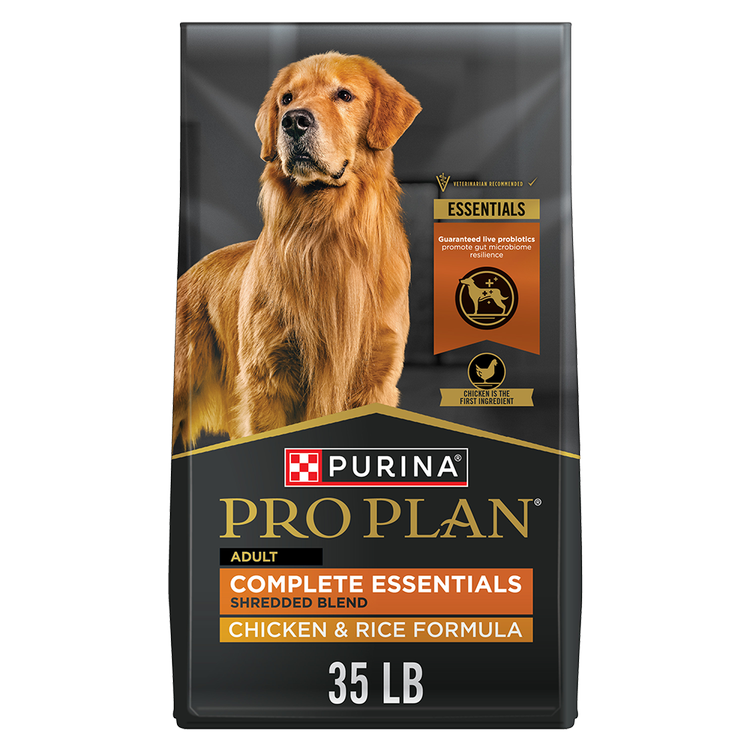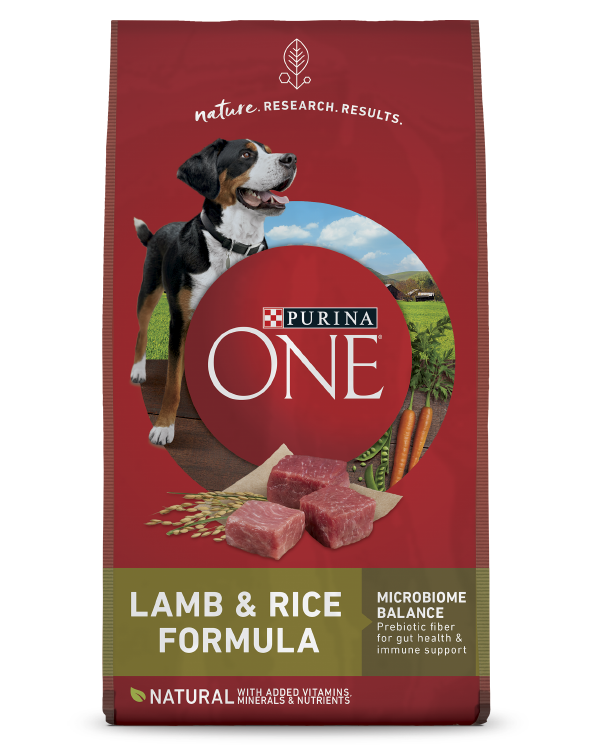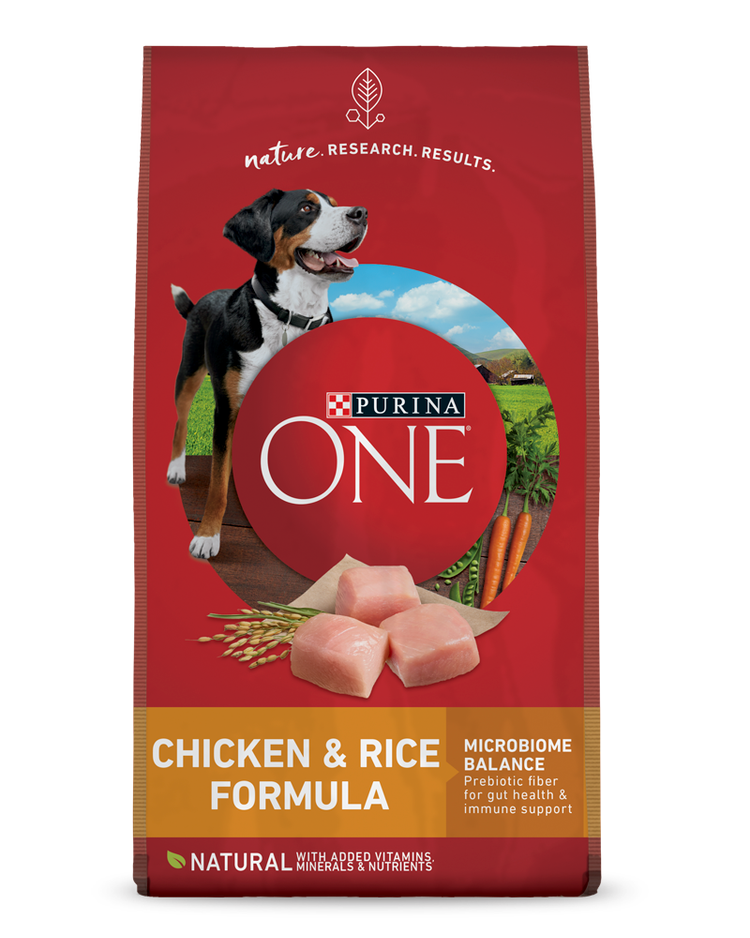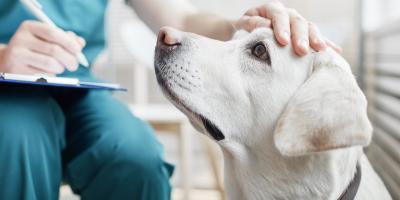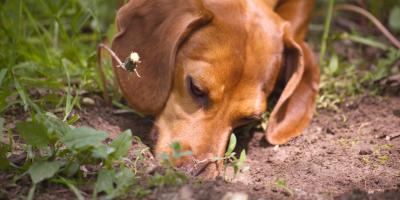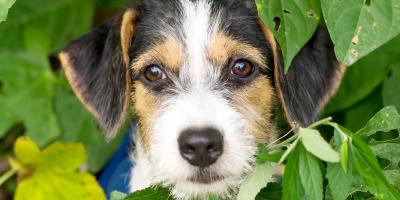Is Your Dog’s Hair Matted? Here’s How to Get Mats Out of Your Dog’s Hair

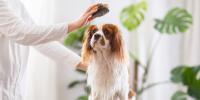
Matted dog hair is uncomfortable, and owners should brush their dogs regularly to keep them mat-free. But even with regular brushing, there may be occasions when mats form. In this article, we review why your dog’s hair is matted, and how to get mats out of your dog’s fur.
Why is Your Dog’s Hair Matted?
A mat happens when your dog’s hair gets tangled around itself, forming a clump of tightly wound fur. If that clump is not brushed out, it will tangle up more hair, dirt, and oil, eventually getting larger and closer to your dog’s skin. When mats get close to the skin, they pull on it, causing discomfort and pain.
Mats on dogs are most likely to form in areas where there is friction, including around the collar, in the armpits, under the chin, on the back of the rear legs, between the toes, and where a harness sits.
Does brushing help a dog with shedding? Yes, and it also helps with preventing mats. If your dog’s fur doesn’t get brushed during shedding season, the loose hair can form a mat. Shedding season happens twice a year – in the fall when your dog sheds his summer coat for winter and in the spring when he sheds his winter coat for summer. However, some dog breeds shed consistently throughout the year, while others only shed minimally.
What Dog Breeds Are More Likely to Develop Mats?
Some dog breeds and mixed breeds are more likely to develop mats. These are breeds with longer or curly hair and dogs with double coats, including:
- Bearded Collies and Rough Coat Collies (long hair)
- Poodles and Bichon Frise (curly hair)
- Doodle mixed breeds (curly hair plus double coats)
Matted dog hair is a problem because it can:
- Interfere with skin airflow
- Cause pelting––where the mat gets very close to the skin and interferes with temperature regulation
- Lead to skin irritations like hot spots
- Hide fleas, ticks, and other parasites
- Pull the skin, causing pain
If your dog is a swimmer, he may be prone to getting more mats. With some dogs, the hair curls as it dries, and as it curls, it gets tangled. Should you brush your dog before or after a bath? Brushing before the bath can remove dead hair. If your dog has curly hair that forms mats when wet, dry him off with a towel and then gently brush his damp hair to prevent mats from forming.
How to Brush a Dog to Remove Mats
Brushing your dog regularly can prevent mats. If the knots are small and loose, you may try spraying them with dog-safe detangling spray and use your fingers to separate the knot.
To brush out matted dog hair with small tangles:
- Isolate the mat from the surrounding hair
- Spray the knot with detangling spray or leave-in conditioner
- Hold your hands near the skin to keep from pulling it
- Start working the mat at the furthest point from the skin rather than trying to brush through it
It helps to keep your dog occupied while you detangle his mats. Having him lick peanut butter off a licking mat may distract him while you work on his fur.
Never try to cut the mats out using scissors. If the mat cannot be detangled, seek out a professional groomer to shave or cut the mat. Do not attempt this on your own since it is very easy to cut the skin inadvertently, and that can lead to stitches and an infection. If you cut your dog or pull the skin too much, it will hurt him, and he’ll be much less likely to let you brush him next time.
For large mats, you might need to use clippers. Try to find clippers that are quiet to keep from frightening your dog.
To trim mats using clippers:
- Hold the skin down to keep it from being pulled
- Use the clippers to shave the mat
- Be sure you don’t pull or raise the skin as you trim the mats
Trimming the mats individually with clippers may create obvious shaved spots in your dog’s coat. To help prevent this, hold the end of the mat firmly with your fingers and work at the mat with the clippers from the base outwards, peeling it off in layers with the blade.
This technique only works for isolated mats, such as those behind the ears. If your dog has mats all over his body, it’s best to see your groomer for a full-body trim rather than trying home remedies for removing matted dog hair.
Tools and Techniques for Brushing a Dog
The tools needed for brushing your dog are quite simple:
- Slicker brushes with fine, short wire bristles close together on a flat brush head. Use this for regular brushing if your dog doesn’t have any mats.
- Flea comb to check and remove fleas and their eggs, fine debris, and dirt. If your dog has fleas, ask your vet for flea medication. Brushing alone will not solve a flea infestation.
- If your dog tries to bite the brush, you might try silicone brushes or grooming gloves if he doesn’t like the feeling of the brush.
- If your dog is scared or stressed about brushing and tries to bite you, work on desensitizing him to the experience. Use baby steps to introduce him to the brush and reinforce your dog’s positive behavior at each step with treats and praise. A trainer/behaviorist can also help your dog view brushing as a positive experience.
- For detangling mats: There are specific grooming combs that have different kinds of teeth – a wide-tooth comb for detangling and longer-tooth comb for brushing the undercoat to remove dead hair.
- Dog-friendly detangling spritzer spray can help.
- Use clippers to remove stubborn mats.
What is the best brush for dog shedding? A deshedding rake with longer bristles can capture the dead hair in the undercoat.
Always brush in the direction of the fur growth. The only exception might be to check for fleas. Gently comb in the opposite direction to lift the fur and look for signs of fleas – actual bugs or tiny black dots, which are flea waste.
How Often Should You Brush Your Dog?
How often you should brush your dog depends on what kind of dog you have and the season. Dogs prone to matting need to be brushed at least once a week; dogs with shorter coats should be brushed less often. During the shedding seasons, brushing more often may be required to reduce mats and shedding in the house. For regular brushing, use an undercoat rake or a slicker brush.
How you brush your dog is important, too. You want to brush the top layer as well as the undercoat. Do all dogs have undercoats? Most dogs do. Some breeds, like Vizslas, Greyhounds, Whippets, French Bulldogs and Bull Terriers, are single coated, which means they only have the course outer coat.
For dogs with double coats, such as Newfoundlands, Australian Shepherds, Golden Retrievers, Chow Chows, German Shepherds, and Akitas, among others, brushing the dog’s undercoat is key to preventing mats. If the undercoat is left unbrushed, it gets pushed into the skin, creating mats.
Do dogs like being brushed? Yes, most dogs enjoy it. Can you overbrush a dog? Yes, you can, but it depends on the dog. If you are unsure if you are brushing too much or too little, ask your professional groomer or your vet.
When to Bring Your Dog to the Groomer to Take Care of Matted Fur
If your dog has a lot of mats, you may need to take your dog to a groomer or a vet for a shave. It’s important to seek professional help because your vet tech or groomer will know how to shave a dog with matted fur. In addition, dogs with long hair may need to go to the groomer regularly to keep mats from forming.
Good groomers will not want to shave your dog shorter than what’s necessary. There are a couple of options for dogs with lots of mats: Shave the matted areas shorter, leaving the rest of the coat at the desired length. Good groomers will try to blend the shaved areas with the longer coat, but there’s a chance the coat will look uneven.
The other option is to shave your dog all over at the shorter length to remove the matting. This might leave the fur very short and close to the skin, but the coat won’t look uneven. It might not be pretty until it grows out, but it will be more comfortable for your dog. If your dog requires this kind of cut, be mindful he might not be able to regulate his temperature without his coat, and he may be prone to sunburns if he is exposed to too much sun.
After that, stay on top of the mats so your dog doesn’t need to be shaved again.
The more you practice, the more comfortable and experienced you will be at brushing your dog and removing mats.
For more expert tips on grooming your dog, explore our other dog routine care articles.
Related articles

Reward Yourself with myPurina
Earn and redeem rewards for Purina products with the myPurina app.

